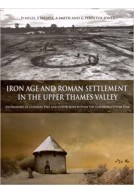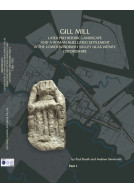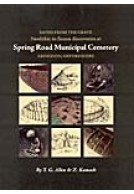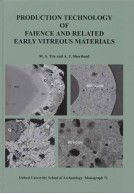Google Books previews are unavailable because you have chosen to turn off third party cookies for enhanced content. Visit our cookies page to review your cookie settings.
From Bronze Age Enclosure to Saxon Settlement (Hardback)
Imprint: Oxford University School of Archaeology
Series: Thames Valley Landscapes Monograph
Pages: 200
ISBN: 9781905905096
Published: 1st December 2009
Script Academic & Professional
Series: Thames Valley Landscapes Monograph
Pages: 200
ISBN: 9781905905096
Published: 1st December 2009
Script Academic & Professional
You'll be £7.95 closer to your next £10.00 credit when you purchase From Bronze Age Enclosure to Saxon Settlement. What's this?
+£4.99 UK Delivery or free UK delivery if order is over £40
(click here for international delivery rates)
Need a currency converter? Check XE.com for live rates
(click here for international delivery rates)
Need a currency converter? Check XE.com for live rates
Recent excavations at Taplow Court have revealed a long sequence of activity stretching from the Mesolithic to the Anglo-Saxon period. Mesolithic struck flints and charred hazelnuts, and early Neolithic flints, were found in a small number of tree-throw holes. A group of inter-cutting hollows or shallow pits of Early Bronze Age date included sherds of Collared Urn and worked flint, rare evidence of domestic activity of this period. There were also finds of the middle Bronze Age, although no features of that phase were confirmed. In the late Bronze Age, a defensible hilltop enclosure about 1.2 ha was constructed on the site. The enclosure, probably first established in the 11th century cal BC, had a complex sequence of defences including a pair of post-rows possibly indicating a timber palisade backed by a raised walkway, a trench-built palisade, a ditch and rampart and further posthole-lines outside the ditch. Only a limited area of the interior was examined, but includes a series of parallel fence lines, one probable roundhouse and up to five possible four-post structures, with occupation extending into the 9th century cal BC. Following a probable hiatus in activity represented by a standstill deposit in the upper part of the ditch, a larger U-profiled hillfort ditch was constructed in the Early Iron Age, probably in the 5th century cal BC, the spoil being dumped over the previous ditch to form a timber-laced rampart, which was soon after destroyed in places by fire. The remains of the charred timbers within the rampart have revealed some details of its construction. The ditch however remained open into the Saxon period, and another internal roundhouse may be Middle Iron Age. A third and even larger V-profiled ditch was found outside the second ditch. Although the date of construction of this outer ditch is uncertain, it too remained open into the Saxon period, suggesting that the hillfort had many ditches its later stages. Price is approximate.
Other titles in the series...
Other titles in Oxford University School of Archaeology...




















